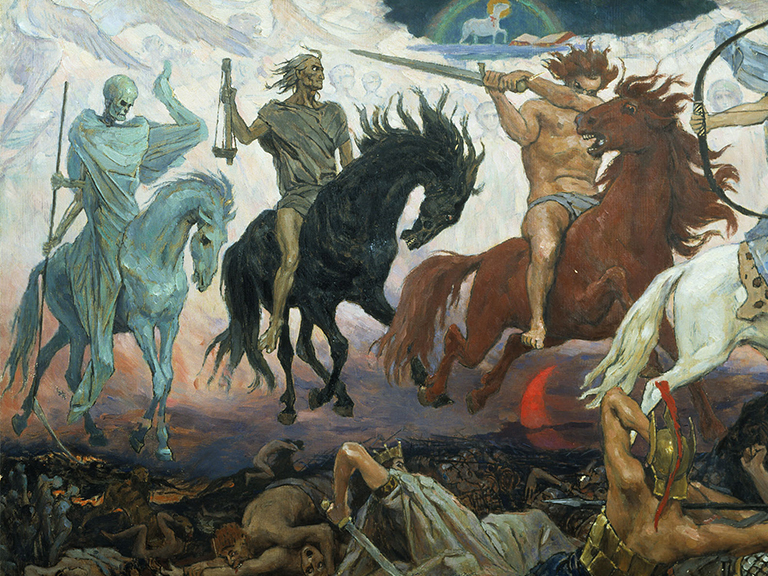Politics and economy
Hunger – the everyday tragedy in abundance
Every day, around 25,000 people die from the direct and indirect consequences of hunger. And yet hunger would be the biggest solvable problem for mankind. There is no shortage of food, knowledge or financial resources. The only thing lacking is political will.

Hunger has persecuted people since the beginning of known history. In figurative terms, together with war and the plague, it formed an apocalyptic trio that traveled across the continents and repeatedly struck people. Even when hunger arose without its two companions, it kept pushing society to the edge of the abyss through its regular visits. It triggered streams of refugees and was a driver of economic, political and social change. Famines burned into the collective memory as creeping catastrophes, evoking ideas of paradisiacal landscapes flowing with milk and honey. Hunger was closely interwoven with people’s lives in pre-industrial Europe. It was part of everyday life – it was a world where the fear of want was omnipresent, even if people were not constantly tormented by hunger.
Hunger as a problem of supply
Hunger is an extremely multifaceted and complex phenomenon at the intersection of natural sciences, social sciences, politics, economics and humanities. American sociologist Sara R. Millman compared hunger research with the parable of the blind men and the elephant. A blind person touching an elephant’s ear perceives hunger differently from a blind person touching its trunk, stomach or leg. The different perceptions led to different interpretations of the phenomenon, its causes, its effects and possible coping strategies. Not least for this reason, one person investigates the supply of food, another the distribution of food, another the consequences of (chronic) malnutrition, a fourth the fields of political intervention and a fifth the roots of hunger.
The perception of hunger has changed over the centuries. Faith and science were not contradictory for many contemporaries beyond the Enlightenment, even though the punishing God of the Old Testament lost influence in the official churches and in universal theology. Biblical parables such as the four apocalyptic horsemen in the Revelation of John – in the impressive portrayal by Albrecht Dürer in 1498 – remained powerful for centuries. The decline in the supply of food during times of famine was also attributed in ecclesiastical circles not only to divine providence, but also to crop failures, wars, lack of grain imports, neglect of agriculture and lack of stockpiling.
In research, these patterns of perception are attributed to the theories of food supply. Robert Thomas Malthus, in his “Essay on the Principle of Population” of 1798, was undoubtedly one of the most influential proponents of the idea that famine was a problem of supply. His simplified equation “too many mouths plus too little food equals hunger,” however, proved to be wrong.
Hunger as a problem of demand
Malthus had no idea how fundamentally the modernization of agriculture and the emergence of major technical systems such as railways and steamships would change hunger in the 19th and 20th centuries. From then on, food could be distributed quickly and easily across the globe. Large parts of Europe escaped hunger in the second half of the 19th century – it was no longer part of people’s daily lives. Amartya Sen finally triggered a paradigm shift in research with his essay “Poverty and Famine” in 1981. The decisive factor for the future winner of the Nobel Prize in Economics was no longer whether enough food was available, but how a person could gain legal access to food. Famine emerges as a problem of the lack of entitlements at the level of the individual due to the legal, political, economic and social structures of society.
Hunger as a problem of political will
Hunger was and is always political. While in the pre-industrial era the lack of food security threatened the legitimacy of rule when the struggle for daily bread led to protests and unrest, the right to adequate and healthy food has been an inalienable human right since 1948. Because hunger prevails today despite abundance, development economist Stephen Devereux sees famines as a failure of politics. Even remote regions can be supplied with sufficient food within a reasonable time in peacetime thanks to modern means of communication and transport. If there was more political will, the apocalyptic trio could become a two-man team.
New magazine uniFOKUS

Subscribe free of charge now!
This article first appeared in uniFOKUS, the new University of Bern print magazine. Four times a year, uniFOKUS shows what academia and science are capable of. Thematically, each issue focuses on one specialist area from different points of view and thus aims to bring together as much expertise and as many research results from scientists and other academics at the University of Bern as possible.
The online magazine of the University of Bern

Subscribe to the uniAKTUELL newsletter
The University of Bern conducts cutting-edge research on topics that concern us as a society and shape our future. In uniAKTUELL we show selected examples and introduce you to the people behind them – gripping, multimedia and free of charge.